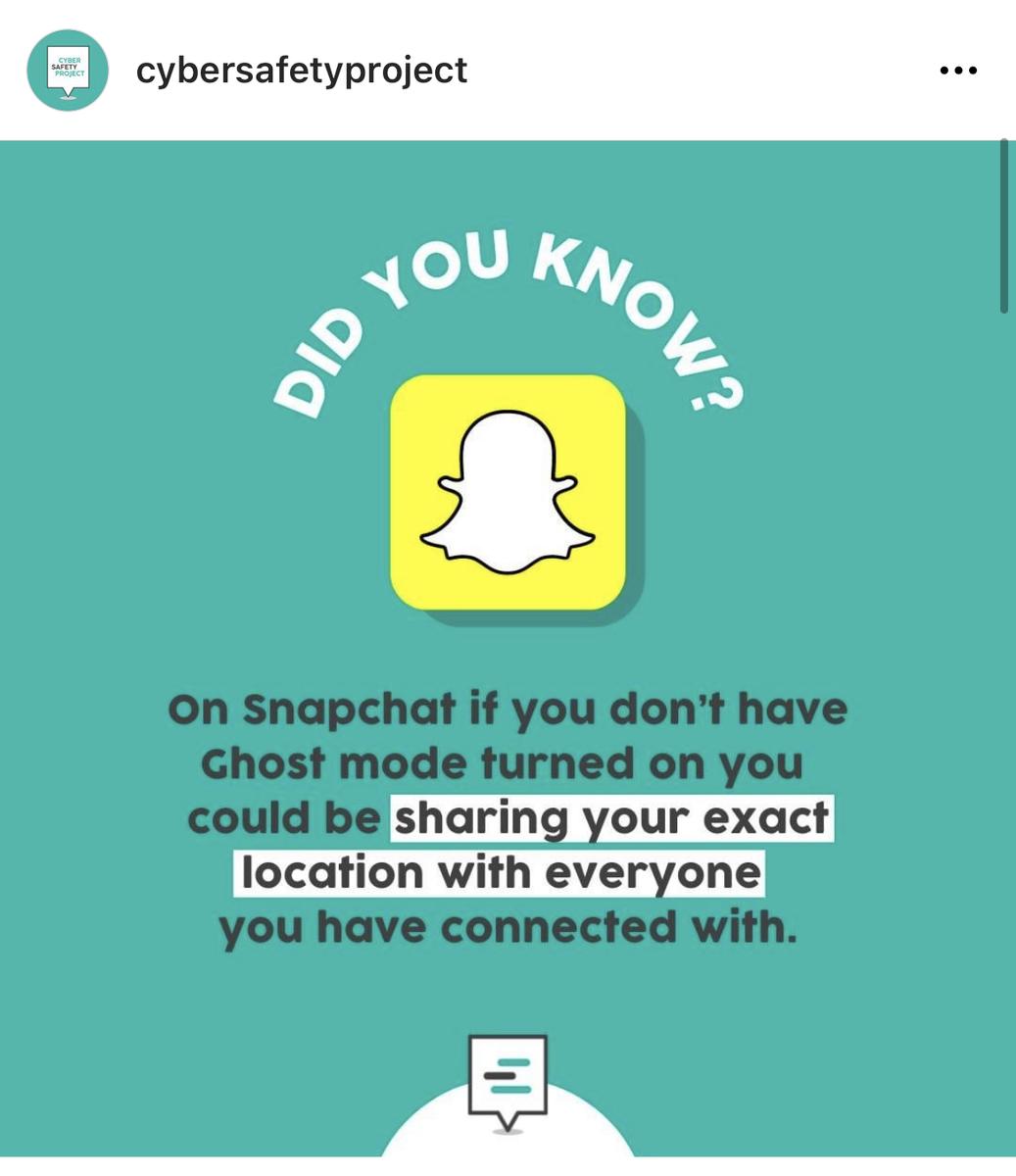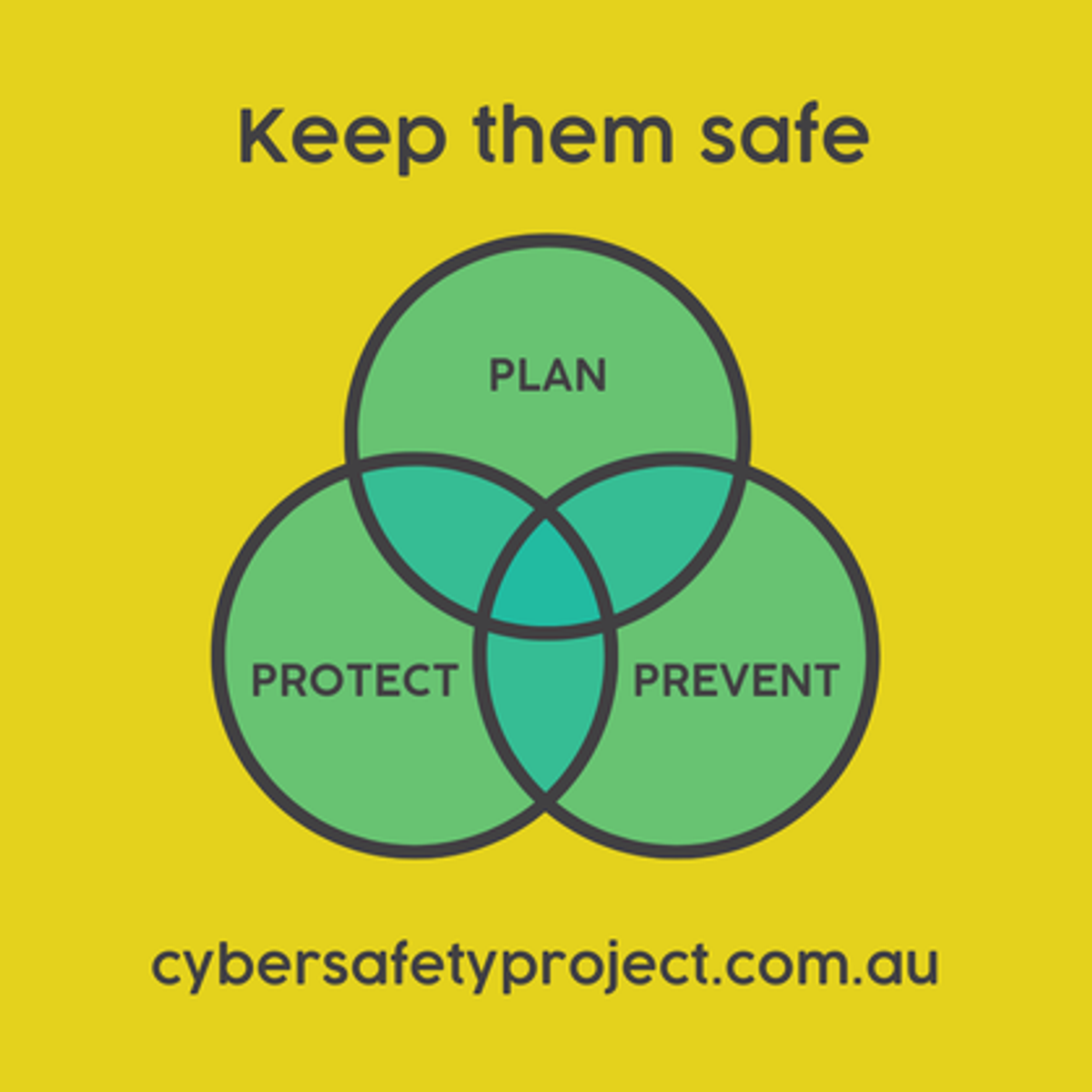Cyber Safety
Keeping our families safe online...

Cyber Safety
Keeping our families safe online...
7 Ways to Stay Safe on Snapchat:
https://cybersafetyproject.com.au/how-to-stay-safe-on-snapchat/


1. Apple 1OS 15.5 Update - Communication Safety Feature: this feature allows you to protect your child from viewing or sharing explicit images in the Messages App.
When activated, the technology will warn children and provide helpful resources if they receive or attempt to send photos that may contain expose of one self. If you are an Apple user, please refer to this link to find out more:https://support.apple.com/en-au/HT2128502.
Digitally Connected Kids...What do they need from us?
Adults and teachers play a crucial role in helping kids to feel safe to disclose.
A recent report commissioned by eSafety found that "young people today want to be confident that adults in their lives have the knowledge and skills to protect them online"
We want our kids to come to us as their 'trusted adults', without fear of being judged, getting into trouble or getting their device taken away. We know that the reality is, our kids may be faced with times where they will need to make their own online safety and wellbeing choices without an adult, so we want to prepare our kids and families to tackle a range of digital dilemmas, where they are able to problem solve, to make the right choices.
For tips about how you can be your child's biggest influencer, check out the Cyber Safety Project's Blog: https://cybersafetyproject.com.au/blog/
Also, check out the eSafety Commissioner's Parent Portal: https://www.esafety.gov.au/parents
Focus: Enabling parents and families to ensure young people can participate safelyand responsibly in their digital world.
Please find attached the flyer for 50% off. Code is FAMILY50
Register here:
Check this out - Scam Watch:
(report or monitor a scam!)
Home is a place where we should all feel safe. It’s the place we nurture our children, and the place we hope our children feel safe to return to when they are grown. With technology playing a significant role in our daily lives, safety in the home now extends to online safety and cyber security. We know navigating technology systems can at times feel overwhelming, so we have put together Cyber Security Guide to help you create a safe digital environment for your family. Before you dive into our guide, check out these five simple actions you can can take to level up your cyber security at home by leveraging things you most likely already have in your house!
1. Name Your Networks
Most home Wi-Fi networks come with a default name. This can make your modem easily identifiable as a home network and often shares the name of your internet provider. Changing your network name to something non-identifiable and off-putting, such as “Toxic-Wifi” or “CSP Surveillance Van 2” can deter people from connecting. Remember not to include any personal information in your network name, such as names or birthdates, to protect your personal data.
Additionally, you can set up a guest network to help keep your home safe online. Visitors to your house can connect to your home network as guests. This helps to prevent viruses, malware or bugs they may unknowingly have on their devices from entering the networks your devices use. Again, keep the name of this network free from personal information and keep safety settings high with password protection.
2. Prescribe a Password
Any device or program you use should be password protected whenever possible. Many accounts now offer two factor authentication – which we recommend taking the time to set up! Password protection safety settings should also be applied to your Wi-Fi network. Take a few moments to check your home network has a strong, secure password. Better yet, use our passphrase strategy to create a strong password that’s easy for you to remember but tricky for others to guess!
3. Declutter Your Devices
Just like filing cabinets, your devices can start to fill up with files, photos, videos and programs that are no longer used, needed or wanted. Be a virtual-world Marie Kondo and take a few minutes to declutter those unnecessary items. A virtual cleanse will free up space as well as allow your device to run more smoothly and efficiently. Properly removing apps that might be tracking locations or other information in the background is healthy for your online safety. Plus, we think it just feels great to be organised and clutter-free! Next time you are scrolling your phone, or are working on your laptop but have hit that 3pm slump, take 10 minutes to remove some unneeded items. You’ll feel better for it and it will be great for your home cyber safety!
4. Strengthen Your Systems
You know that iOS update your phone keeps reminding you to run but you just haven’t had a chance to hit go? Did you know there’s more to that update than just an annoying new redesign to your screen? Each updated operating system on your device (no matter what device that is) also provides fresh privacy features and strengthened security settings. For example, recommended system updates will fix bugs found in its previous version, allowing for better and safer user experiences.
5. Peruse Your Privacy
Devices
These days, all devices come with inbuilt privacy and safety settings. However, it’s worthwhile taking the time to look closely at these settings and changing them from their default where needed. We recommend beginning with location settings, local network configurations and password autofill. You can also explore options to block specific websites, limit usage times and prevent autofill of banking or credit card details.
Apps and Programs
You will be able to navigate to privacy and safety settings of specific apps (both through your general settings and within each app) which we highly recommend you explore. We have blog posts on information and tips for some popular platforms such as TikTok, Minecraft and Netflix.
Modems
Even your home modem is likely to have inbuilt safety settings and parental controls. Your modem may allow you to restrict when devices are able to connect to your Wi-Fi network. This can usually be done in hour and minute blocks and can even select specific days of the week. For example, restricting an iPad from connecting to the internet between 7pm and 5am, or only allowing online use on weekends. Some modems allow for URL rules where specific websites can be blocked from Wi-Fi networks. URL rules can even be limited to restrictions on specific devices (such as kids’ devices). Your antivirus software may be able to guide you in creating these safety settings too.


When it comes to using technology at home, it’s important to plan for device use, leverage tools and settings to prevent harm, and protect young people as they develop skills to safely and independently navigate the online world. Go ahead: implement these five simple ways to be cyber secure at home right away. Then, check out our free Cyber Security Guide for more information and tips to help you keep your home safe online and protect your family.
Author: Trent Ray (Co-Founder & Educator, Cyber Safety Project)
When working on a device at home you may like to consider the following to keep your family safe online:
It is integral to establish clear protocols and procedures when working in online spaces, including reviewing and considering the safety and appropriateness of online tools and communities. Please use the resources below to assist your family with online safety:
The Cyber Safety Project
https://www.cybersafetyproject.com.au/
Office of the Children’s eSafety Commissioner https://www.esafety.gov.au/